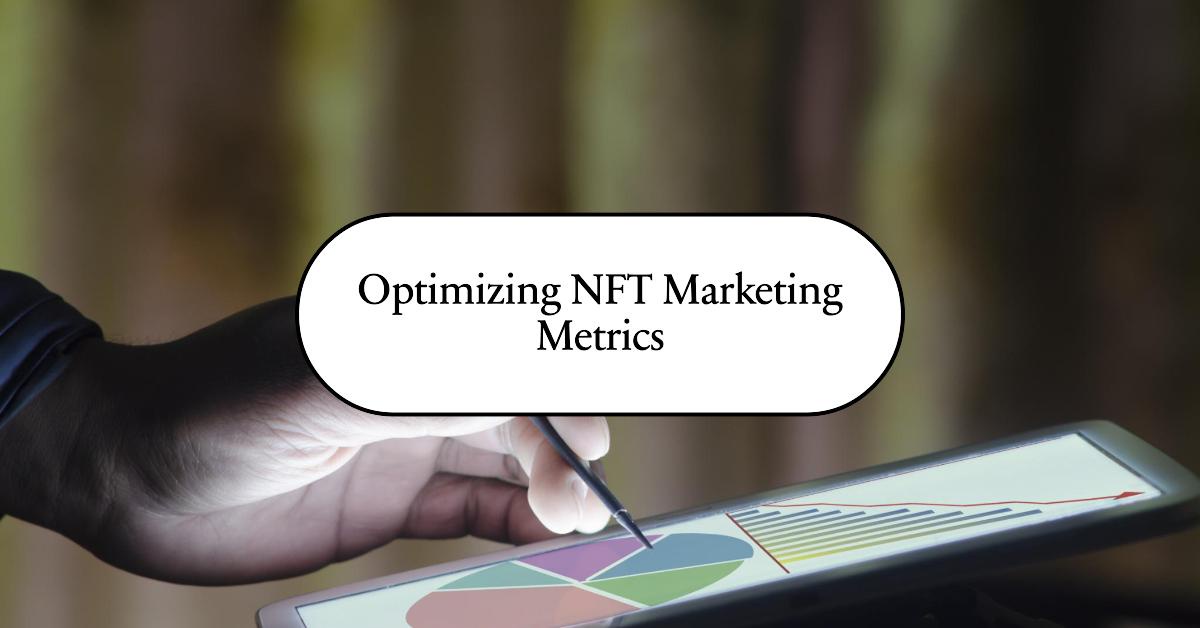In the dynamic world of Non-Fungible Tokens (NFTs), marketing plays a crucial role in driving visibility, engagement, and sales for digital assets. However, measuring the effectiveness of NFT marketing campaigns requires a strategic approach and a comprehensive understanding of key metrics. By tracking the right metrics and analyzing campaign performance, creators, brands, and platforms can optimize their marketing efforts and maximize their impact in the NFT marketplace.
Understanding Key NFT Marketing Metrics
-
Impressions: Impressions indicate the number of times an NFT is displayed or viewed by users. Tracking impressions provides insights into the reach and exposure of marketing campaigns across various channels, including social media, websites, and NFT marketplaces.
-
Click-Through Rate (CTR): CTR measures the percentage of users who click on a link or call-to-action (CTA) within an NFT marketing campaign. A high CTR indicates that the campaign is compelling and resonates with the target audience, driving traffic and engagement.
-
Conversion Rate: Conversion rate measures the percentage of users who complete a desired action, such as purchasing an NFT or signing up for a newsletter, after interacting with a marketing campaign. By tracking conversion rates, marketers can assess the effectiveness of their campaigns in driving desired outcomes.
-
Engagement Metrics: Engagement metrics, including likes, shares, comments, and retweets, reflect the level of interaction and interest generated by NFT marketing content. High engagement indicates active participation and enthusiasm within the community, contributing to brand awareness and loyalty.
-
Social Media Reach and Impressions: Social media platforms offer insights into the reach and impressions of NFT marketing content, allowing marketers to gauge the effectiveness of their social media campaigns in reaching and engaging target audiences.
-
Website Traffic and Referral Sources: Analyzing website traffic and referral sources provides visibility into the sources driving visitors to NFT websites or marketplaces. By identifying top-performing channels and optimizing marketing efforts accordingly, marketers can maximize traffic and conversions.
Optimizing NFT Marketing Campaigns
-
Targeted Audience Segmentation: Segmenting the target audience based on demographics, interests, and behaviors enables marketers to tailor NFT marketing campaigns to specific audience segments, increasing relevance and effectiveness.
-
A/B Testing: Experimenting with different creatives, messaging, and campaign elements through A/B testing allows marketers to identify the most effective strategies and optimize campaign performance based on data-driven insights.
-
Iterative Campaign Optimization: Continuously monitoring NFT marketing metrics and iterating on campaign strategies based on performance data enables marketers to refine their approach, identify areas for improvement, and drive better results over time.
-
Community Engagement and Feedback: Engaging with the NFT community, soliciting feedback, and incorporating user insights into marketing campaigns foster a sense of collaboration and ownership, strengthening relationships and driving advocacy.
Conclusion
By tracking key NFT marketing metrics and optimizing campaign performance, creators, brands, and platforms can enhance their visibility, engagement, and sales in the competitive NFT marketplace. Leveraging data-driven insights and adopting iterative optimization strategies enable marketers to stay agile, adapt to evolving trends, and achieve their marketing objectives effectively.


No comments yet